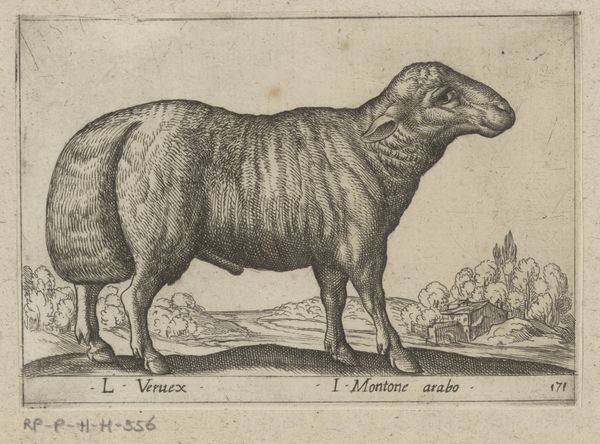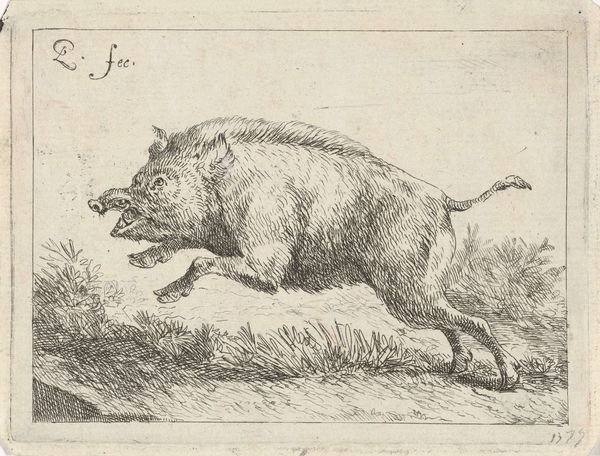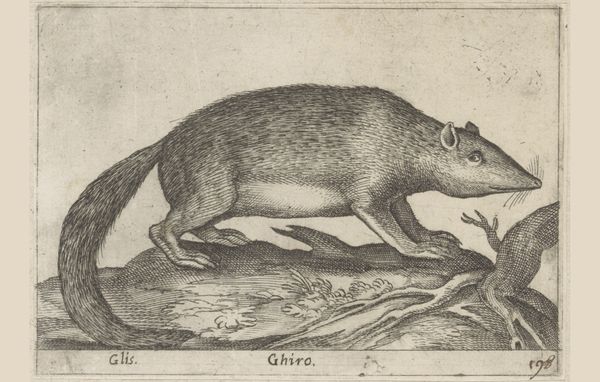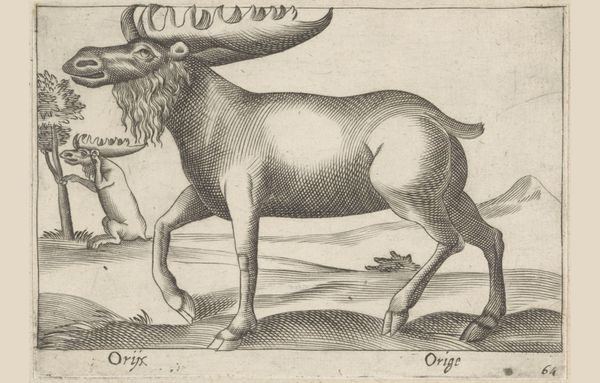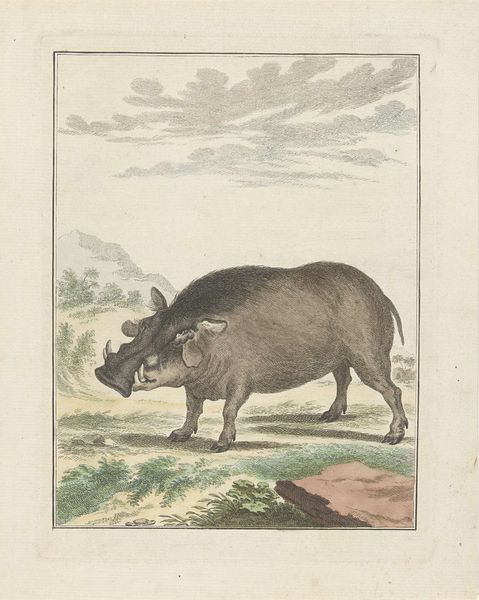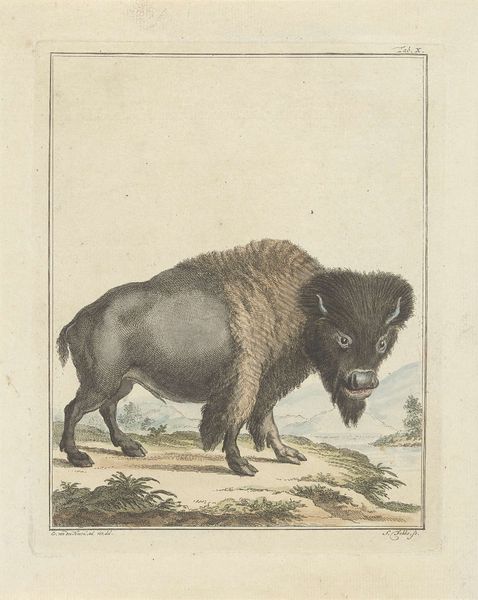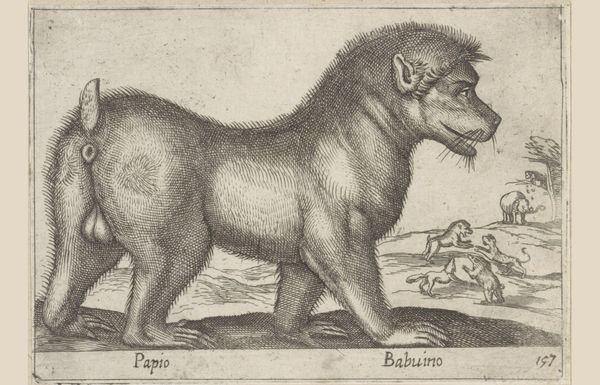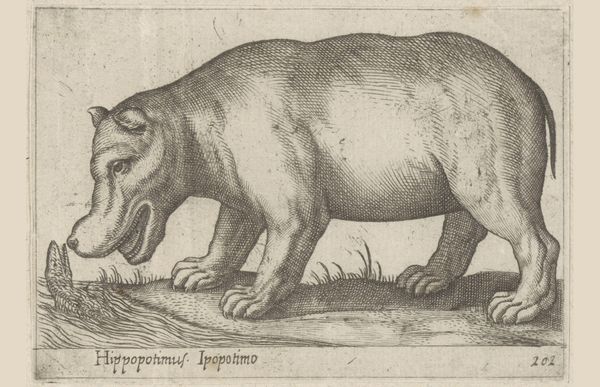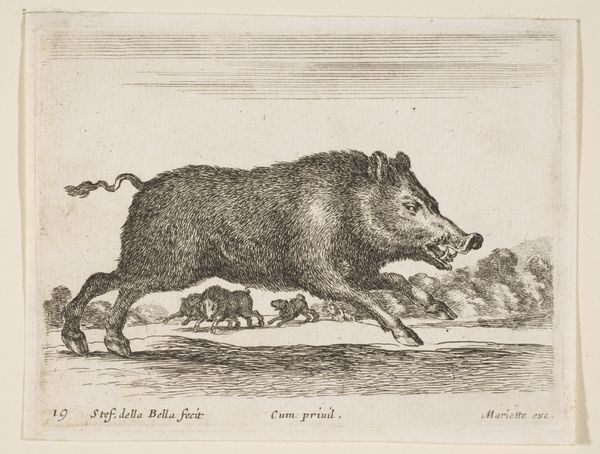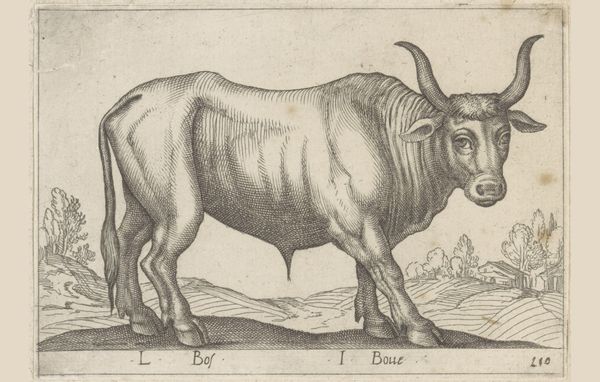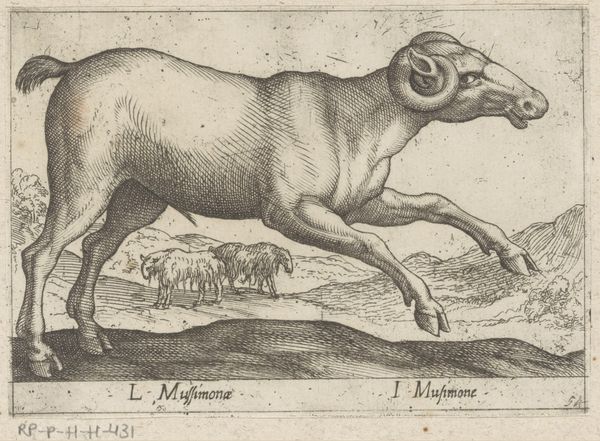
print, engraving
#
animal
# print
#
old engraving style
#
11_renaissance
#
engraving
#
realism
Dimensions: height 95 mm, width 137 mm
Copyright: Rijks Museum: Open Domain
Antonio Tempesta made this engraving of a South American coati, or 'Rode neusbeer' as it's known in Dutch, sometime between 1575 and 1630. The image participates in a visual culture that was expanding to include the fauna of a wider world, due to the early modern period of exploration and colonization. The print's scientific and social meanings are shaped by the artist's hand. Note the collar around the animal’s neck, which suggests domestication, and the animal’s pose, presented for the viewer's clear observation. The text beneath the image labels the animal as coming from ‘India,’ a common misnomer in Europe at this time. As a historian, I'm interested in how the institutions of science and art collaborated to construct knowledge about the natural world. Illustrated compendiums of animals were popular amongst the European elite. These books, alongside curiosity cabinets, were sites for the circulation of knowledge. Through careful consideration of this historical context, we can better understand the cultural significance of this image.
Comments
No comments
Be the first to comment and join the conversation on the ultimate creative platform.
